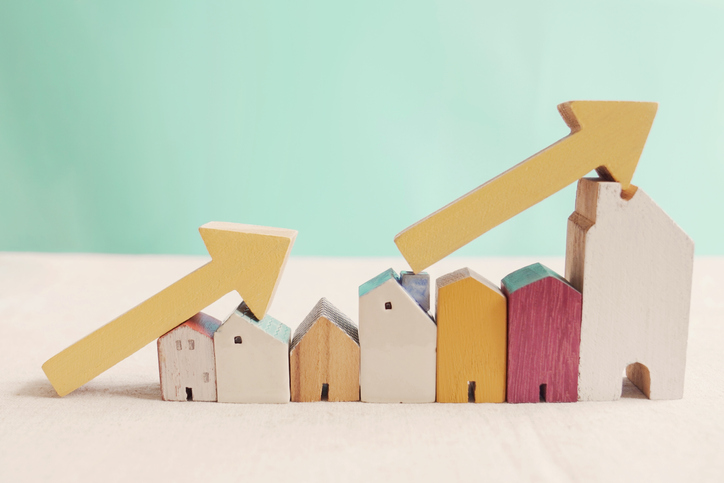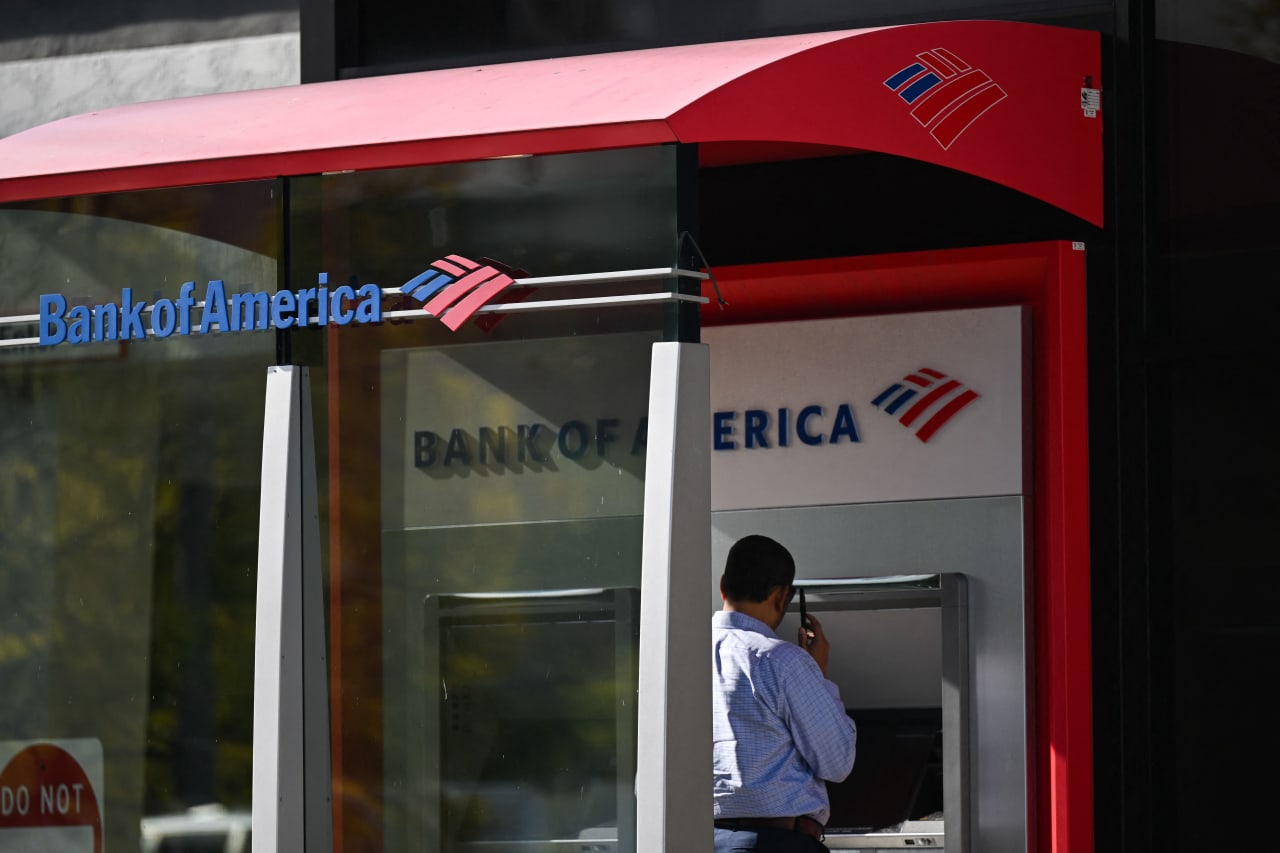Higher Interest Rates Not Just for Longer, but Maybe Forever
Rate projections suggest many Fed officials see a rising ‘neutral rate’
On Wednesday, Federal Reserve officials surprised markets by signalling interest rates won’t fall as much as previously planned.
The tweak might be more important than it looks. In their projections and commentary, some officials hint that rates might be higher not just for longer, but forever. In more technical terms, the so-called neutral rate, which keeps inflation and unemployment stable over time, has risen.
This matters to any investor, business or household whose plans depend on interest rates over a decade or longer. It could explain why long-term Treasury yields have risen sharply in the past few months, and why stocks are struggling.
The neutral rate isn’t literally forever, but that captures the general idea. In the long run neutral is a function of very slow moving forces: demographics, the global demand for capital, the level of government debt and investors’ assessments of inflation and growth risks.
The neutral rate can’t be observed, only inferred by how the economy responds to particular levels of interest rates. If current rates aren’t slowing demand or inflation, then neutral must be higher and monetary policy isn’t tight.
Indeed, on Wednesday, Fed Chair Jerome Powell allowed that one reason the economy and labor market remain resilient despite rates between 5.25% and 5.5% is that neutral has risen, though he added: “We don’t know that.”
Before the 2007-09 recession and financial crisis, economists thought the neutral rate was around 4% to 4.5%. After subtracting 2% inflation, the real neutral rate was 2% to 2.5%. In the subsequent decade, the Fed kept interest rates near zero, yet growth remained sluggish and inflation below 2%. Estimates of neutral began to drop. Fed officials’ median estimate of the longer-run fed-funds rate—their proxy for neutral—fell from 4% in 2013 to 2.5% in 2019, or 0.5% in real terms.
As of Wednesday, the median estimate was still 2.5%. But five of 18 Fed officials put it at 3% or higher, compared with just three officials in June and two last December.
In 2026, officials project the economy growing at its long-term rate of 1.8%, unemployment at its long-run natural level of 4%, and inflation at its 2% target. Those conditions would normally be consistent with interest rates at neutral. As it happens, officials think the fed-funds rate will end the year at 2.9%—another hint they think neutral has risen.
There are plenty of reasons for a higher neutral. After the global financial crisis, businesses, households and banks were paying down debt instead of borrowing, reducing demand for savings while holding down growth and inflation. As the crisis faded, so did the downward pressure on interest rates.
Another is government red ink: Federal debt held by the public now stands at 95% of gross domestic product, up from 80% at the start of 2020, and federal deficits are now 6% of GDP and projected to keep rising, from under 5% before the pandemic. To get investors to hold so much more debt probably requires paying them more. The Fed bought bonds after the financial crisis and again during the pandemic to push down long-term interest rates. It is now shedding those bondholdings.
Inflation should not, by itself, affect the real neutral rate. However, before the pandemic the Fed’s principal concern was that inflation would persist below 2%, a situation that makes it difficult to stimulate spending and can lead to deflation, and that is why it kept rates near zero from 2008 to 2015. In the future it will worry more that inflation persists above 2%, and err on the side of higher rates with little appetite for returning to zero.
Other factors are still pressing down on neutral, such as an aging world population, which reduces demand for homes and capital goods to equip workers.
So neutral has probably risen since 2019, but not to its pre-2008 level. Indeed, futures markets peg rates a decade from now at around 3.75%.
Of course, this is all just a forecast. If inflation comes down painlessly in the next year, if growth slows abruptly, or if Treasury yields drop, then estimates of neutral will also come down. For now, the evidence suggests the public should get used to higher rates as far as the eye can see.
 Copyright 2020, Dow Jones & Company, Inc. All Rights Reserved Worldwide. LEARN MORE
Copyright 2020, Dow Jones & Company, Inc. All Rights Reserved Worldwide. LEARN MORE
This stylish family home combines a classic palette and finishes with a flexible floorplan
Just 55 minutes from Sydney, make this your creative getaway located in the majestic Hawkesbury region.
When will Berkshire Hathaway stop selling Bank of America stock?
Berkshire began liquidating its big stake in the banking company in mid-July—and has already unloaded about 15% of its interest. The selling has been fairly aggressive and has totaled about $6 billion. (Berkshire still holds 883 million shares, an 11.3% interest worth $35 billion based on its most recent filing on Aug. 30.)
The selling has prompted speculation about when CEO Warren Buffett, who oversees Berkshire’s $300 billion equity portfolio, will stop. The sales have depressed Bank of America stock, which has underperformed peers since Berkshire began its sell program. The stock closed down 0.9% Thursday at $40.14.
It’s possible that Berkshire will stop selling when the stake drops to 700 million shares. Taxes and history would be the reasons why.
Berkshire accumulated its Bank of America stake in two stages—and at vastly different prices. Berkshire’s initial stake came in 2017 , when it swapped $5 billion of Bank of America preferred stock for 700 million shares of common stock via warrants it received as part of the original preferred investment in 2011.
Berkshire got a sweet deal in that 2011 transaction. At the time, Bank of America was looking for a Buffett imprimatur—and the bank’s stock price was weak and under $10 a share.
Berkshire paid about $7 a share for that initial stake of 700 million common shares. The rest of the Berkshire stake, more than 300 million shares, was mostly purchased in 2018 at around $30 a share.
With Bank of America stock currently trading around $40, Berkshire faces a high tax burden from selling shares from the original stake of 700 million shares, given the low cost basis, and a much lighter tax hit from unloading the rest. Berkshire is subject to corporate taxes—an estimated 25% including local taxes—on gains on any sales of stock. The tax bite is stark.
Berkshire might own $2 to $3 a share in taxes on sales of high-cost stock and $8 a share on low-cost stock purchased for $7 a share.
New York tax expert Robert Willens says corporations, like individuals, can specify the particular lots when they sell stock with multiple cost levels.
“If stock is held in the custody of a broker, an adequate identification is made if the taxpayer specifies to the broker having custody of the stock the particular stock to be sold and, within a reasonable time thereafter, confirmation of such specification is set forth in a written document from the broker,” Willens told Barron’s in an email.
He assumes that Berkshire will identify the high-cost Bank of America stock for the recent sales to minimize its tax liability.
If sellers don’t specify, they generally are subject to “first in, first out,” or FIFO, accounting, meaning that the stock bought first would be subject to any tax on gains.
Buffett tends to be tax-averse—and that may prompt him to keep the original stake of 700 million shares. He could also mull any loyalty he may feel toward Bank of America CEO Brian Moynihan , whom Buffett has praised in the past.
Another reason for Berkshire to hold Bank of America is that it’s the company’s only big equity holding among traditional banks after selling shares of U.S. Bancorp , Bank of New York Mellon , JPMorgan Chase , and Wells Fargo in recent years.
Buffett, however, often eliminates stock holdings after he begins selling them down, as he did with the other bank stocks. Berkshire does retain a smaller stake of about $3 billion in Citigroup.
There could be a new filing on sales of Bank of America stock by Berkshire on Thursday evening. It has been three business days since the last one.
Berkshire must file within two business days of any sales of Bank of America stock since it owns more than 10%. The conglomerate will need to get its stake under about 777 million shares, about 100 million below the current level, before it can avoid the two-day filing rule.
It should be said that taxes haven’t deterred Buffett from selling over half of Berkshire’s stake in Apple this year—an estimated $85 billion or more of stock. Barron’s has estimated that Berkshire may owe $15 billion on the bulk of the sales that occurred in the second quarter.
Berkshire now holds 400 million shares of Apple and Barron’s has argued that Buffett may be finished reducing the Apple stake at that round number, which is the same number of shares that Berkshire has held in Coca-Cola for more than two decades.
Buffett may like round numbers—and 700 million could be just the right figure for Bank of America.
This stylish family home combines a classic palette and finishes with a flexible floorplan
Just 55 minutes from Sydney, make this your creative getaway located in the majestic Hawkesbury region.






















